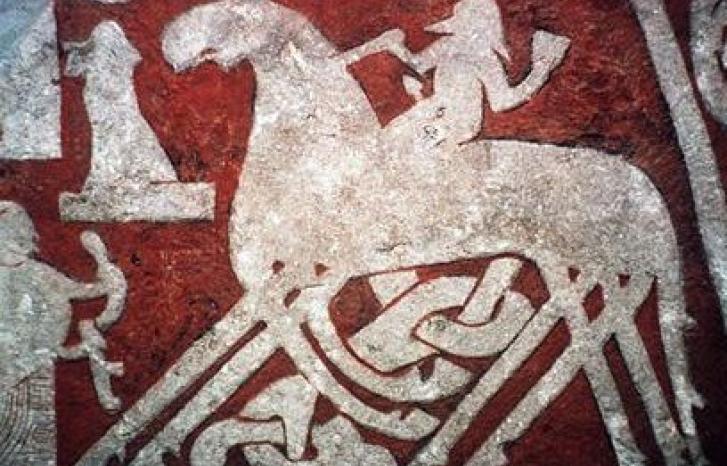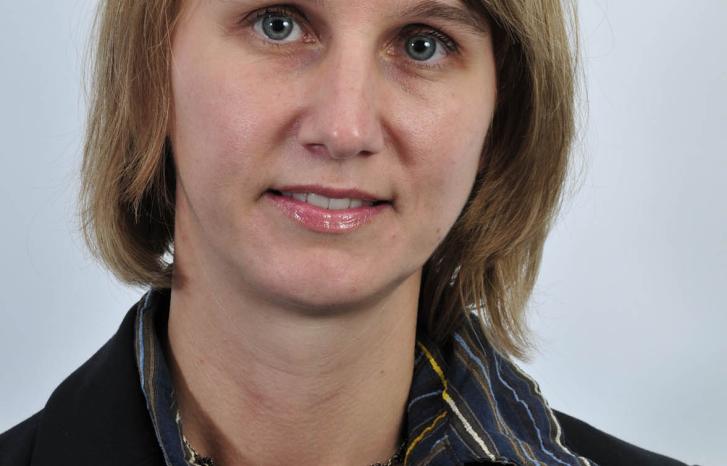In the utopian world of Anders Behring Breivik, “politically correct feminism” has been combated and eradicated. Western women have reconciled themselves with their naturally subordinate role, given up the pursuit of higher education, and become sexually “pure” and completely dedicated to their true calling: reproducing Europe and the white race. Or – if gaining sufficient control over women has proven difficult – then breeding clinics based on egg donations and surrogates have been established to ensure Europe’s reproduction. In the long term, Breivik envisions the use of artificial uteruses to further reduce men’s dependence on women.
“Breivik’s anti-feminist views have been under-explored in comparison with his hatred of Muslims. But anti-feminism and misogyny are deeply implicated in everything he stands for,” says Jane Clare Jones, a British philosopher who is writing her doctoral thesis on feminist ethics at Stony Brook University in New York. Since the terrorist attacks on 22 July, she has spent a great deal of time studying Anders Behring Breivik’s manifesto.
Misogyny on two levels
Jones believes that Breivik’s misogynistic beliefs are manifested on two levels.
“The first aspect of his anti-feminism involves his belief that female emancipation is a direct cause of the degeneration of European culture. In the first instance this is because Western women’s focus on career has led to a demographic collapse which, in his eyes, opens Europe to Muslim colonization. Moreover, Breivik also suggests that female ‘emotionalism’ and ‘compassion’ leads women to betray Europe by making them more sympathetic to multiculturalism. When women gain social and political power, these values spread and thus, Europe becomes weak and ‘feminized’ – an easy target for ‘aggressive’ Islamists,” says Jones.
Jones believes, however, that Breivik’s supposedly “factual” reasons for why Western women are implicated in the Islamization of Europe are less interesting than the symbolic content of his ideas.
“The ‘factual’ account is problematic on so many levels that it’s hard to know where to start. However, more significant is what is happening in his thinking at a symbolic level: the series of connections and analogies which link the notion of sexual purity with the notion of cultural – read racial – purity.”
“Fundamentally, Breivik’s thought is structured around an ‘economy of purity’, an economy of ‘us’ versus ‘them’, or identitarianism if you will. This can only be maintained by rigorously policing the boundary between inside and outside, the boundary that Jacques Derrida calls the ‘matrix of all possible opposition’.”
Penetration is shameful
According to Jones, the feminine must be disciplined and controlled because it represents a continuous threat to the economy of purity.
“The feminine is a threat to this economy because it – both literally and figuratively – lets the other inside it, and thereby blurs the boundaries between the inside and the outside. In Breivik’s mind the connection is clear: Cultural degradation - or ‘contamination’ as he also calls it - is intimately linked with sexual immorality, construed principally in terms of female promiscuity (and also, not insignificantly, male homosexuality). Uncontrolled female sexuality is problematic to him, both because it puportedly leads to literal contamination in the form of an epidemic of sexually transmitted disease, but, moreover, because it is a deep source of shame in itself. An economy of purity - or identity - is deeply invested in keeping the outside out, and in such an economy, therefore, to be penetrated is inherently shameful. This relation between racial/cultural and sexual purity is made particularly explicit in the image of the feminized Europe penetrated – ‘raped’ he actually says - by the Muslim.”
Masculine invulnerability
At the heart of what Jones calls the “lie of the pure” is the ideal of the inviolate, independent and invulnerable self.
“It is about the construction of a certain type of patriarchal masculinity which is fixated on the necessity of its own impenetrability, its own invulnerability, its own independence. Women, who many men depend on for sex, reproduction and care, for example, represent a constant threat to this ideal. At base, this fantasy of invulnerability is about the desire to be fully insured against risk – and ultimately, against death. If you don’t need anyone, nobody can hurt you. You can have complete control.”
“Breivik describes himself as a kind of crusader, but killing women and children isn’t particularly heroic, is it?”

“It’s certainly not uncommon for the most ‘chivalrous’ men, - those most concerned with protecting ‘their’ women – to be also the most misogynistic. This is because they assume that ‘other’ men will regard ‘their’ women in the same way as they regard the women of ‘other’ men: as objects to be used in the scheme of masculine rivalry. It’s important to remember that masculinity, understood as invulnerability, is always under threat, not only from dependence on women, but also from other men’s violence. In this scheme women become a currency that men use in their attempt to dominate each other – take wartime rape, for example. From this perspective there is really no incompatibility between Breivik’s view of himself as a ‘knightly’ warrior and the crime he committed. The women and children he murdered were not ‘his’. They were the enemy’s, and their loss is the price the enemy must pay in war,” explains Jones.
Paradoxes of right-wing extremism
Much of the anti-feminism that Anders Behring Breivik presents in his manifesto is taken from other voices on the extreme far right. According to Jones, the misogyny and masculine ideal Breivik stands for is widespread, including among more moderate right-wingers who dissociate themselves from Breivik and his actions.
“There is a difference in degree but not in kind. As I see it, misogyny is centrally implicated in any economy of purity,” says Jones.
Translated by Connie Stultz.
On 22 July 2011 Norway was hit by two sequential terrorist attacks.
The first was a car bomb explosion in Oslo within the executive government quarter of Norway. The explosion killed eight people, wounded many others and caused severe damage to buildings in the area.
The second attack occurred less than two hours later at a summer camp on the island of Utøya. The camp was organized by the youth division of the ruling Norwegian Labour Party. A gunman dressed in an authentic looking police uniform and showing false identification gained access to the island and subsequently opened fire at the participants, killing 69 attendees and injuring many more.
The police arrested Anders Behring Breivik, a 32-year-old Norwegian right-wing extremist, for the mass shootings on Utøya and subsequently charged him with both attacks.



